Caro-Kann Defense: Complete Opening Guide
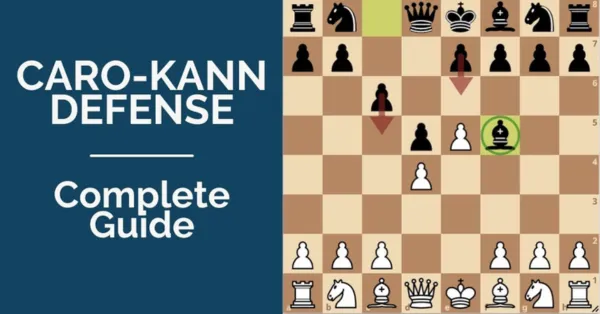
Caro-Kann Defense is one of the most fashionable openings nowadays at the grandmaster and beginner levels. It is a reliable weapon that does not require a lot of memorization and usually leads to calm positional games. The good thing is that it still allows Black to play for a win: the positions are not sharp but still quite lively.
The Caro Kann Defense is easy to learn, not memory intensive, and packs a punch. What more can a player ask for? In this guide, we will discuss how to play the Caro Kann and the important features of this evergreen opening for black.
Caro-Kann Defense: What is it?
It starts with the moves 1.e4 c6 and is often considered an improved version of the French Defense. It is arguable but logical. To illustrate that, let’s compare the positions from the Advanced Variations of the French and the Caro-Kann main line (here are the 10 reasons why you should consider the Caro).
After 1.e4 e6 2.d4 d5 3.e5 c5, the following position appears:
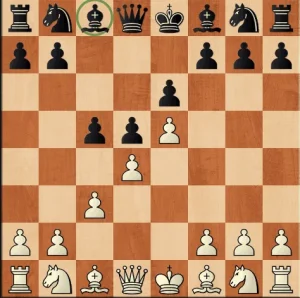
White got more space in the center but Black gets counter-play by attacking the pawn chain from the flank. The important thing to note here is Black’s light-squared bishop. The pawns restrict it and often become the worst piece in a position.
In the Caro-Kann variation, after 1.e4 c6 2.d4 d5 3.e5, Black can develop their light-squared bishop to an active position on f5:

Later, Black plays …e7-e6 and starts attacking White’s pawn chain by …c6-c5. Therefore, Black wastes a tempo for playing the pawn from c7 to c5 in two moves but instead gets the bishop activated.
The Caro-Kann Defense has been popular at the highest level for many years. It has been consistently used by the World Champions: Capablanca, Botvinnik, Petrosian, Anand, Carlsen, and especially Karpov, who has played it regularly. Nowadays practically every top grandmaster has it in their repertoire.
History of the Caro-Kann
The Caro Kann opening is named after the English player Horatio Caro and the Austrian player Marcus Kann, who analyzed it in 1886. They found a novel attempt to improve the French Defense. The first recorded games with the Caro-Kann occurred in the 1800s.
The opening shot to fame was when Marcus Kann defeated the German-British Champion and well-known theoretician Jacques Mieses in Hamburg in May 1885 with the Caro Kann Defense. What’s special about the game was that it lasted only 24 moves. A great debut at the highest levels for the Caro-Kann opening!
Why Play the Caro–Kann Defense?
The Caro Kann Defense is designed to secure the French defense’s good features and avoid the bad ones. Theoretically, it supports the central pawn with a semi-central pawn. This leaves the central files open and therefore the pieces can move around easier.
The factor that draws players towards the Caro Kann defense is that it has clear plans and ideas. This makes it easier for players to understand and apply.
Conception of the Caro Kann
A curious fact to notice is that after 1.e4 the pawn is undefended. Black aims to exploit this by building a pawn chain directed at the pawn on e4.
The opening uses the flexibility of the Knight. It’s natural square is taken away but due to its flexibility, it can find its way into the game through other pathways.
The same is not to be said for the bishop when the e-pawn is used as an anchor. The bishop will take several tempi to reach an active post. But on the other hand, it becomes easier for White to get the upper hand in the center.
How To Reach The Caro–Kann Defence?
The Caro Kann is a defense that you can use as Black against the opening choice 1.e4 by White. You can reach the Caro Kann by playing 1..c6
Variation of The Caro Kann Defence
Now let’s look at the main variations of the Caro-Kann Defense. After 1.e4 c6 2.d4 d5, White has a choice.
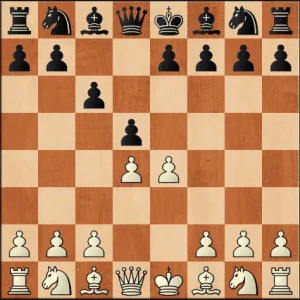
Caro Kann’s Theory is built on four distinct motifs. They are
- Maintain the tension: Here maintaining the center is much less complicated than the French defense because the dxe4 is virtually forced. Black cannot out away the capture as any move by black and then white gets to advance in the center in favorable conditions.
- Attack the central structure: 3.exd5 cxd5 4.c4 This is the line that nearly put Caro Kann opening out of business in its early days. White plays energetically to counter black’s lack of intent. The strength of this attack is that it hits the Black center immediately and hits hard. Now Black has two problems: how to maintain the center and find a suitable place for the Queen Bishop.
- Simplify the center: White can simplify the center and then proceed to play in a subdued fashion. This approach hopes for a long drawn-out battle.
- Advance and set a cramping position: The pawn push sets up a cramping pawn chain but there is nothing cramped, unlike the French Defense. But white hopes that his advanced pawn will give him attacking chances on the Kingside.
Both 3.Nc3 and 3.Nd2 lead to the Classical Variation after 3…dxe4 4.Nxe4. These moves maintain the tension but black chooses to dissolve the central tension to his benefit.
The resulting position produces a distinct pawn formation. White has a majority on the Queenside and Black has a majority on the Kingside. White must handle his pawn majority more skillfully. This is because the unsupported pawn on d4 is the prime counterattacking target for black.
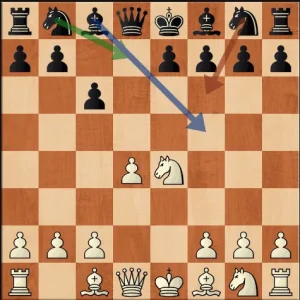
Now Black has three main options: 4…Bf5, 4…Nd7, and 4…Nf6.
Caro–Kann Defense: Classical Variation
First Moves
The Classical variation of the Caro Kann defense starts with the following moves:
1.e4 c6
2.d4 d5
3.Nc3 dxe4
4.Nxe4 Bf5
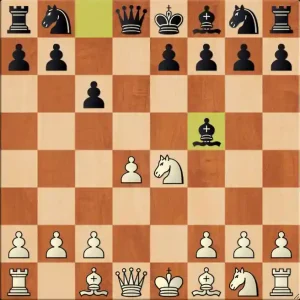
How To Play
The classical variation is regarded as the mainline for the Caro Kann defense. White plays principle chess to counter the Caro Kann. White gains space with the first two moves and then develops the knight to an optimum post (Nc3). Black will have to contend with White’s space advantage and should look to counter in the center or Queenside. Piece exchanges are generally good for Black in this variation. That being said, Black is often solid and if White overextends then it can quickly backfire for White.
Caro-Kann Defense: Capablanca Variation
First Moves
The Capablanca variation of the Caro Kann defense starts with the following moves:
1.e4 c6
2.d4 d5
3.Nc3 dxe4
4.Nxe4 Bf5
5.Ng3 Bg6
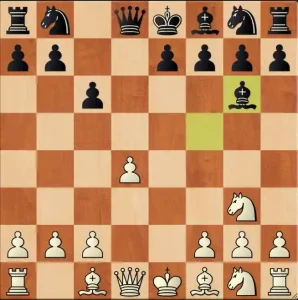
How To Play
This is so far the most popular move for Black and is logical. Black’s main idea in the Caro-Kann opening is to solve the problem of the light-squared bishop.
White now plans to play Ne5.
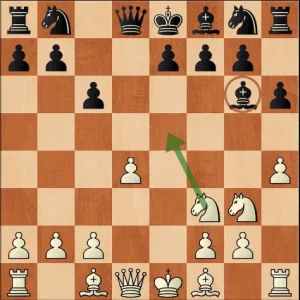
According to Caro Kann theory, Black can ignore this threat with 7…e6, but the more traditional way is to prevent this idea with 7…Nd7. After 8.h5 Bh7 9.Bd3 Bxd3 10.Qxd3 e6 11.Bd2 Ngf6 12.0-0-0, the following position appears.
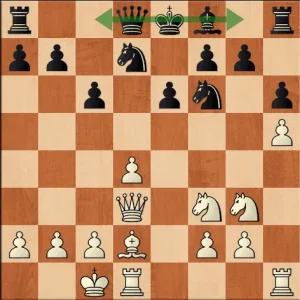
Here Black can choose the old and solid plan of castling queenside after 12…Qc7 or prefer a more modern and sharp plan with 12…Be7 and kingside castling. Look at the examples of both strategies in the PGN viewer below.
These games showcase the main ideas in these Caro Kann lines.
Let’s also mention that White had less popular but still venomous alternatives along the way, so be careful.
Caro-Kann Defense: The Karpov Variation
First Moves
The Karpov variation of the Caro Kann defense starts with the following moves:
1.e4 c6
2.d4 d5
3.Nc3 dxe4
4.Nxe4 Nd7
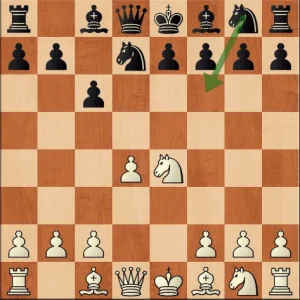
How To Play
Although 4…Bf5 and 4…Nf6 is currently the most fashionable moves and constitute the Caro Kann main line, the Karpov variation is still quite relevant. It usually leads to a solid but a bit passive position for Black.
The main idea of 4…Nd7 is to prepare 5…Ngf6.
Warning: if you ever want to play this Caro Kann line make sure not to blunder a smothered checkmate after the tricky 5.Qe2. Now in the case of 5…Ngf6??, White finishes the game with 6.Nd6# A neat trap to remember when learning the Caro Kann defense.
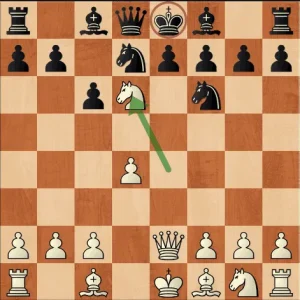
Be careful! Instead of 5…Ngf6??, you can play 5…e6 or even 5…Ndf6.
Here is one of the most famous Caro Kann chess games that started with this variation. Anatoly Karpov shocked his opponent with a strong and unusual 11th move.
Caro-Kann Defense: 4…Nf6 Variations
First Moves
1.e4 c6
2.d4 d5
3.Nc3 dxe4
4.Nxe4 Nf6
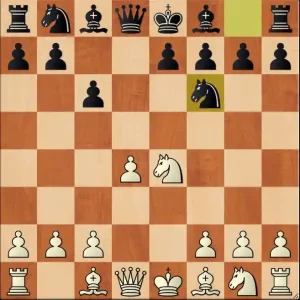
How To Play
This Caro Kann system gained a lot of popularity recently. After 5.Nxf6+ by White, Black has a choice. 5…gxf6 leads to double-edged positions with some active play for Black but White can secure some edge. This is one of the systems that you teach to a player who is figuring out how to play the Caro Kann.
5…exf6 is the main choice in modern practice.
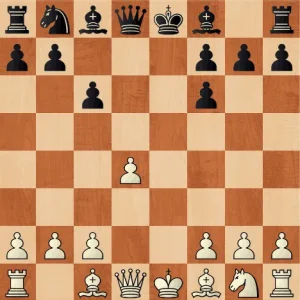
Black gets a solid position with easy development. The doubled pawns are not weak, control a lot of important squares in the center, and serve as a shield for Black’s king. The drawback of this pawn structure is that White has more pawns on the queenside and can create a passed pawn there in the future.
Caro-Kann Defense: Advanced Variation
First Moves
The Advanced variation of the Caro Kann defense starts with the following moves:
1.e4 c6
2.d4 d5
3.e5
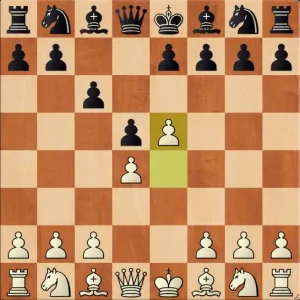
How To Play
We briefly discussed this variation above when comparing the Caro-Kann Defense with the French Defense. Nowadays this variation is White’s main weapon at the grandmaster level. These Caro Kann lines lead to complicated positions where it is difficult to navigate for both sides.
I would not recommend playing this line if White is below the expert level.
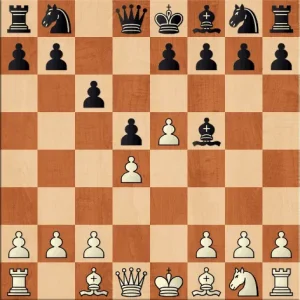
After 3…Bf5, White has a lot of options but generally speaking, there are two approaches. In this Caro Kann variation moves like 4.Nf3, 4.Nd2, 4.Be3, or 4.c4 usually lead to a complex maneuvering struggle. You can see how the game might continue in this case in the PGN viewer below.
White’s second approach is to sharpen the game. It can be achieved with the immediate 4.g4, attacking the bishop and launching a pawn storm. White can also prepare it with 4.Nc3 or 4.h4.
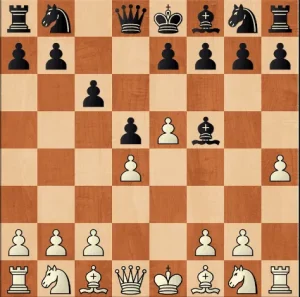
The latter move is quite fashionable nowadays and consists of a little trap: after the most natural 4…e6, Black’s bishop gets trapped by White pawns after 5.g4, followed by h4-h5 and f2-f3. That is why instead of 4…e6??, Black’s main choice is either 4…h6 or 4…h5.
Apart from 3…Bf5, Black can also play 3…c5 immediately. This Caro Kann variation is less popular but is still very playable and interesting.
Caro-Kann Defense: Exchange Variation
First Moves
The Exchange variation of the Caro Kann defense starts with the following moves:
1.e4 c6
2.d4 d5
3.exd5
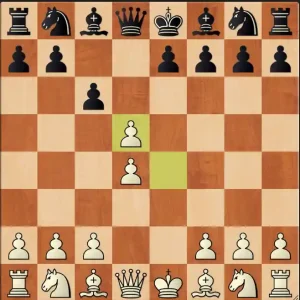
How To Play
The Exchange Variation was used to be considered harmless and boring some time ago.
However, in recent years this Caro Kann line was reassessed and now many strong grandmasters use it to play for a win. The arising positions often resemble the London System and provide White with chances to obtain a small but stable advantage.
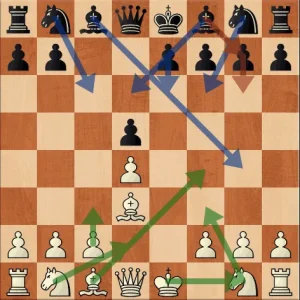
Unlike the Advanced Variation, this Caro Kann line is playable at any level. After 4.Bd3, White would love to put their bishop on f4, the pawn on c3, the knights on f3 and d2, castle kingside, and later develop the initiative in the center and the kingside.
One of Black’s possible plans would be completing the development and going for a minority attack on the queenside with …b7-b5-b4 in the future.
Caro-Kann Defense: The Panov-Botvinnik Attack
First Moves
The Panov-Botvinnik Attack variation of the Caro Kann defense starts with the following moves:
1.e4 c6
2.d4 d5
3.exd5 cxd5
4.c4
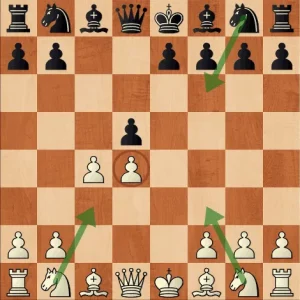
How To Play
This is a sub-line of the Exchange Variation, but it leads to different positions.
After the trade of the c4 and d5 pawns the d4 pawn will become isolated. Many openings lead to such positions with an isolated queen’s pawn (the IQP), so studying the Panov attack properly will help you in many other lines.
Want to learn how GMs study chess openings? Read How to Study Openings to Beat Grandmasters!
Caro-Kann Defense: The Fantasy Variation
First Moves
The Fantasy variation of the Caro Kann defense starts with the following moves:
1.e4 c6
2.d4 d5
3.f3
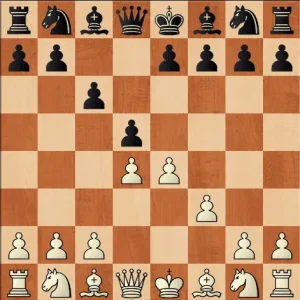
How To Play
The Fantasy Variation starts with the move 3.f3 This is arguably the most provocative line in the whole of Caro Kann theory.
White strengthens the center with the pawn and prepares to castle queenside and launch a pawn storm on the kingside. This line is not very popular, so you will not meet it as often as the above-mentioned variations.
However, it was employed by Maxime Vachier-Lagrave in the Candidates Tournament 2021. He scored a quick win against Alekseenko. You can see this Caro Kann game and a better example of handling Black’s position in the PGN viewer below.
Caro-Kann Defense: The Two Knights Variation
First Moves
The Two Knights variation of the Caro Kann defense starts with the following moves:
1.e4 c6
2.Nc3 d5
3.Nf3
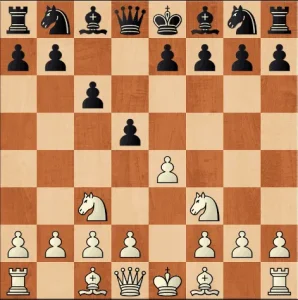
How To Play
White can also delay the d-pawn push and start developing the knights. The same position appears after 2.Nf3 d5 3.Nc3 or 2.Nc3 d5 3.Nf3
Here Black’s main moves are 3…Bg4, 3…dxe4, and 3…Nf6. The latter leads to complicated and unbalanced positions but slightly disappears from practice.
3…Bg4 4.h3 Bxf3 5.Qxf3 e6 was always considered the mainline but nowadays 3…dxe4 has become even more popular.
After 4.Nxe4 Nf6, Black hopes to get a position similar to what we saw in the Classical Variation. White can deviate with 5.Qe2 Nxe4 6.Qxe4:
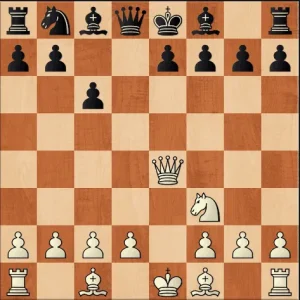
Now Black has a lot of different options. For example, 6…Qd5, offering a queen trade and preparing …Bf5.
Caro–Kann Defense: Hillbilly attack
First Moves
The Hillbilly Attack variation of the Caro Kann defense starts with the following moves:
1.e4 c6
2.Bc4
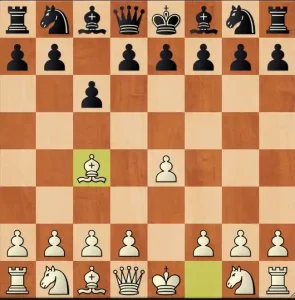
How to Play
The Hillbilly Attack is one of the more unconventional variations in Caro Kann theory White can employ against the Caro Kann Defense. The principal objective of using this variation is to surprise the opponent and take them out of their book. 2.Bc4 is a principled move but in this case, it runs straight into 2..d5 and White has to lose time with his Bishop.
It’s not seen in high-level play, but it can be an effective weapon in club-level games where opponents may not be as prepared for such offbeat lines.
Understanding the key ideas and principles behind the Hillbilly Attack can add an interesting layer to a player’s opening repertoire.
Learn the key tactical ideas and traps in this Caro Kann opening and you might surprise your opponents and score a win or two.
Caro–Kann Defense: Anti-Caro-Kann defense
First Moves
Anti-Caro Kann Defense starts with the following moves:
1.e4 c6
2.c4
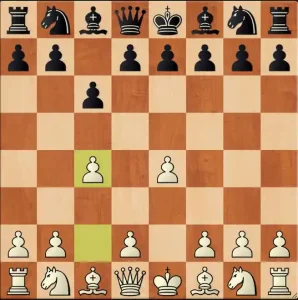
How to Play
Anti-Caro Kann Defense is a way for White to confuse matters. With the move 2.c4 White accepts to exchange a bunch of central pawns to get open lines for his pieces.
This line doesn’t give White any advantage as the simple 2.d5 immediately equalizes for Black.
If Black knows what to do then after the central pawn exchanges you get a standard exchange variation.
2..d5 3.exd5 cxd5
Now White can play 4.cxd5 or 4.d4
4.d4 transposes to the Panov-Botvinnik Attack variation of the Caro Kann Defense.
Caro–Kann Defense: Goldman (Spielmann) variation
First Moves
The Goldman (Spielmann) variation of the Caro Kann defense starts with the following moves:
1.e4 c6
2.Nc3 d5
3.Qf3
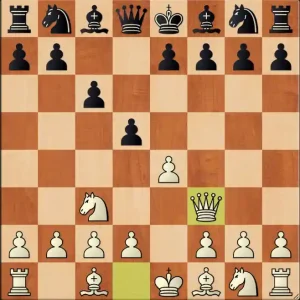
How to Play
With the move 3.Qf3 White invites Black to advance and gain space with the pawn advance d5 to d4. This move gains space and at the same time comes with a tempo on the knight on c3.
White aims to unbalance the position even if it means he has to give up the first move advantage.
White hopes by deviating from the Caro Kann mainlines the positions that come about will be dynamic and unbalanced, offering both sides chances for an advantage.
After 3..d4 White doesn’t retreat the Knight but uses his Queen position and plays 4.Bc4
Now, White threatens a mate-in-one on f7. Black parries this with 4..e6
White can continue in the following way
5.Ne2 c5 6. Qg3 (To hinder the Black’s development on the Kingside) Nc6 7.Nf3
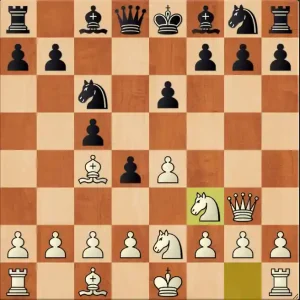
Caro–Kann Defense: Closed (Breyer) variation
First Moves
The Closed (Breyer) variation of the Caro Kann defense starts with the following moves:
1.e4 c6
2.d3
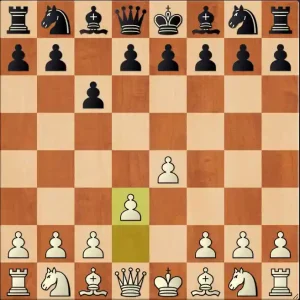
How to Play
The Closed variation of the Caro Kann Defense offers White a solid and resilient structure. Rather than extending the position White aims to build a solid central position with d3. This often transposes to a King’s Indian Attack structure.
If White goes for the King’s Indian Attack with 2.d3 d5 3.Nd2, Black can grab the center with 3…e5 4.Ngf3 Bd6 5.g3 Nf6 6.Bg2 0-0 7.0-0 Re8, with a good position.
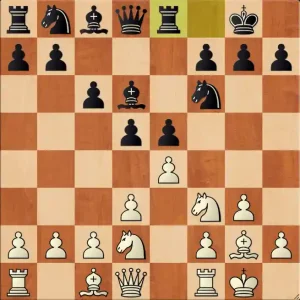
It’s a less common path than the classical caro kann lines, which means it can be a valuable surprise weapon in a player’s repertoire.
Players who enjoy complex middlegame positions with a lot of maneuvering might find this variation particularly appealing.
Other tries
Some people might try 2.Nf3 d5 3.d3 against you. After 3…dxe4 4.dxe4 Qxd1 5.Kxd1, the arising endgame is slightly more preferable for White. Black can also try 3…Bg4 or 3…g6.
Is the Caro–Kann Good for Beginners?
Learning the Caro-Kann Defense is a good choice for chess beginners due to its solid and principled nature.
It offers a good alternative to the French Defense or Sicilian Defense without requiring extensive theoretical study.
One of the biggest advantages of the Caro Kann defense is that it has clear plans and ideas, making it easier for beginners to understand and apply. The Caro-Kann allows for dynamic and positional play. This is advantageous for players at the beginner level as it often leads to White making mistakes that Black can capitalize on.
Many chess resources and educators recommend the Caro-Kann for beginners because of its straightforward piece placement and the opportunities it provides in all three phases of the game.
Chess Courses About Caro–Kann Defense
There are a variety of courses on the Caro-Kann. Each course caters to different levels of chess players.
These courses cover various aspects of the Caro-Kann, including the main lines and less common variations
The most popular Caro Kann Defense courses are listed below:
- Caro-Kann Defense: Karpov’s Repertoire with GM Marian Petrov
- The Complete Caro-Kann Mastermind with IM Milovan Ratkovic
- My Caro-Kann Parts 1-2 with GM Pavel Eljanov
- Caro-Kann Defense – Modern Chess Camp
- Play Fantasy Variation vs. Caro-Kann with GM Misa Pap
Tips In Caro Kann Defence
- Patience is a great asset for a player to have in the Caro Kann opening. Many positions that arise out of the opening require slow maneuvering play.
- Players need to develop a good sense of counterattack to play the Caro Kann well. In the initial stages Black cedes space to white therefore at some point Black must contest for space.
- Caro Kann players should study the standard Caro Kann pawn structure (pawns on c6 and e6) thoroughly as it will be their bread and butter.
Conclusion
White has a broad choice of interesting systems against the Caro-Kann, but as you can see, Black has a lot of good ways of meeting all of them. It is a reliable opening that can be played at any level. You can also see some of the best games on Caro-Kann.
Hopefully, this article will help you add this defense to your repertoire.
Want to add Caro-Kann to your opening repertoire? Then check out the courses mentioned in the course list. These will help you learn the Caro Kann Defense in depth.
FAQ About Caro Kann Defense
Is Caro-Kann bad for beginners?
The Caro Kann defense is a perfectly playable opening for beginners. However, it requires the players to know the classical strategy.
Is Caro-Kann worth learning?
The Caro Kann is worth learning for players of all levels. Some players even adopt the Caro Kann as a lifelong opening.
Is Sicilian Defense better than Caro-Kann?
Both the Sicilian Defense and Caro Kann are equally good openings. The only differentiating factor is the type of positions they bring on the board. The Caro Kann lines produce more calm positions.
Do grandmasters use Caro-Kann?
Yes, many Grandmasters play the Caro Kann regularly. The top player who plays the Caro Kann frequently is Alireza Firouzja.
Can you win with the Caro-Kann?
Yes, you can play for the win with the Caro Kann defense. In this opening, you get interesting ideas and strategies for all game scenarios.
Should You add Caro-Kann to your Opening Repertoire?
The Caro Kann defense can be a great opening to add to your repertoire. Play a few games with it and see if it suits your style.
https://thechessworld.com/store/product/caro-kann-defense-karpovs-repertoire-with-gm-marian-petrov/



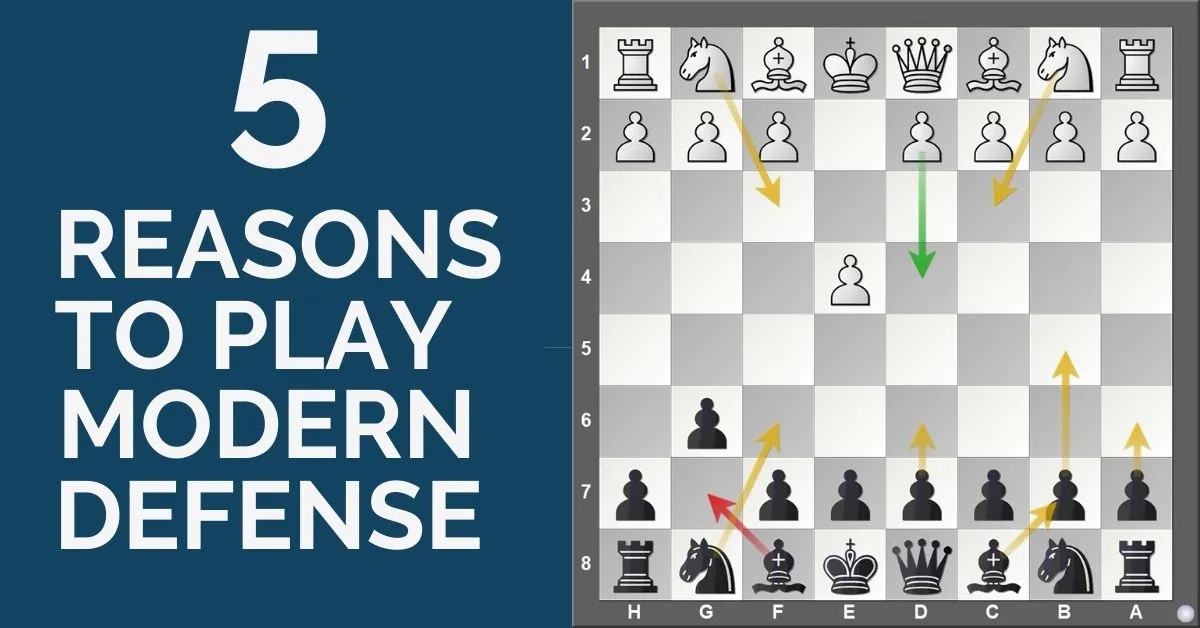
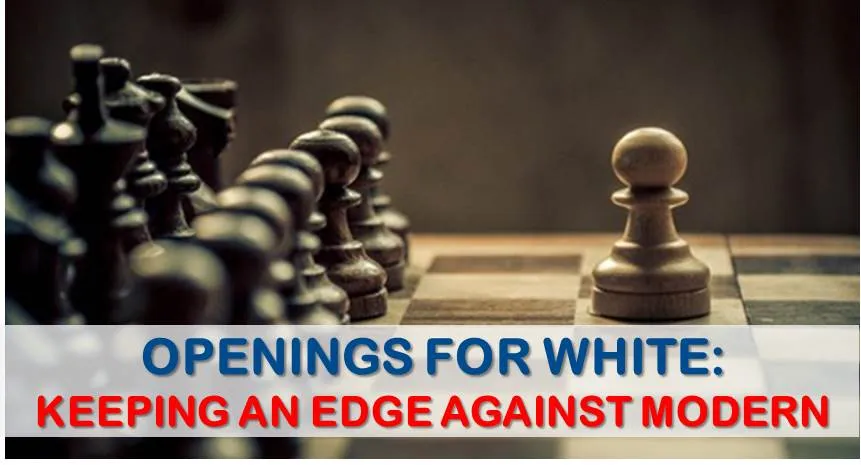





Comments: